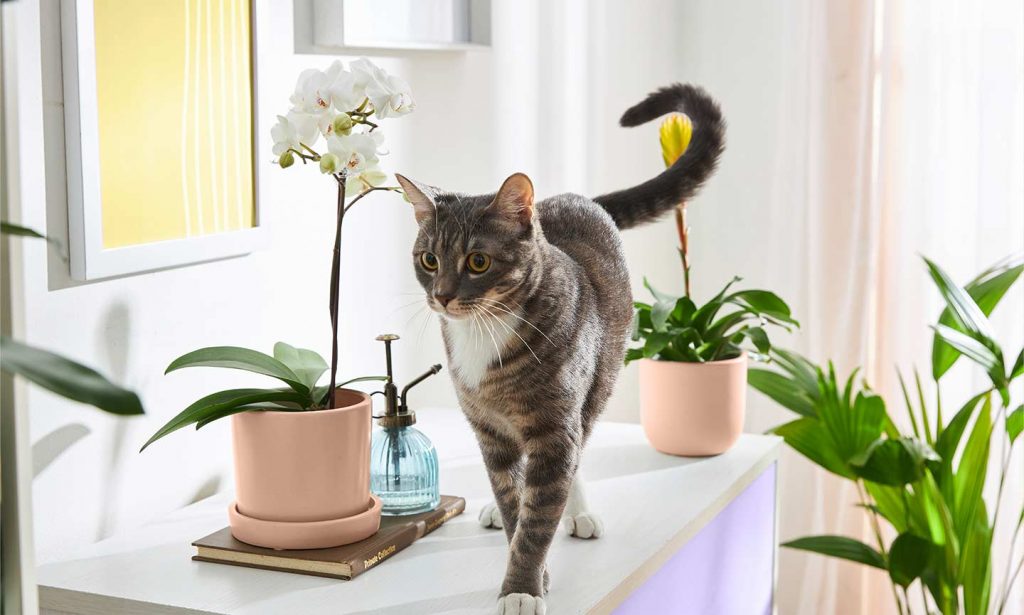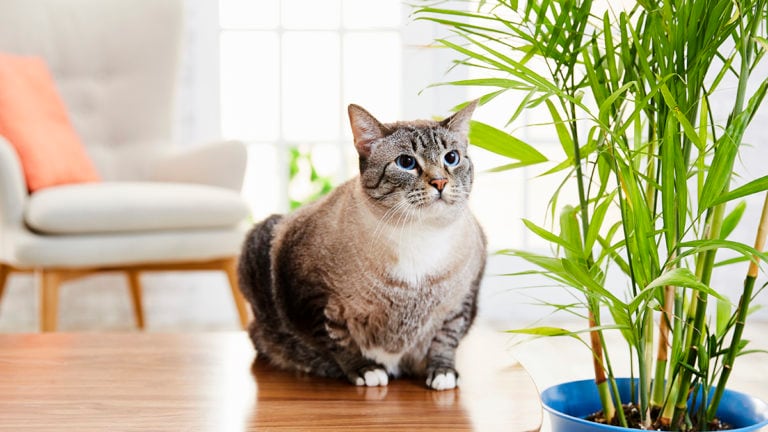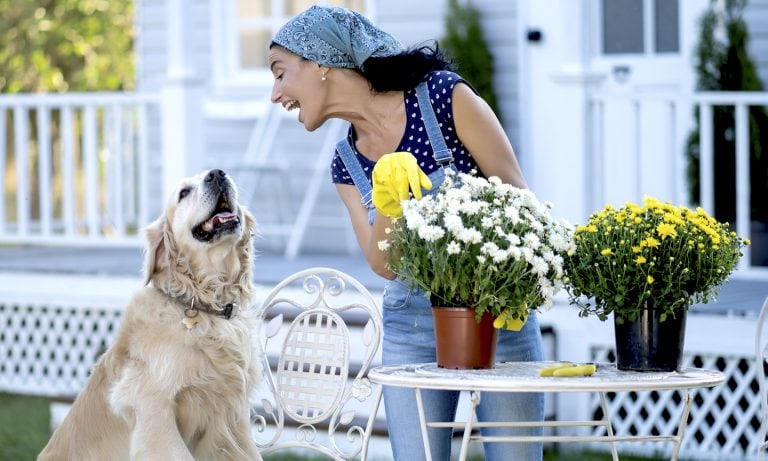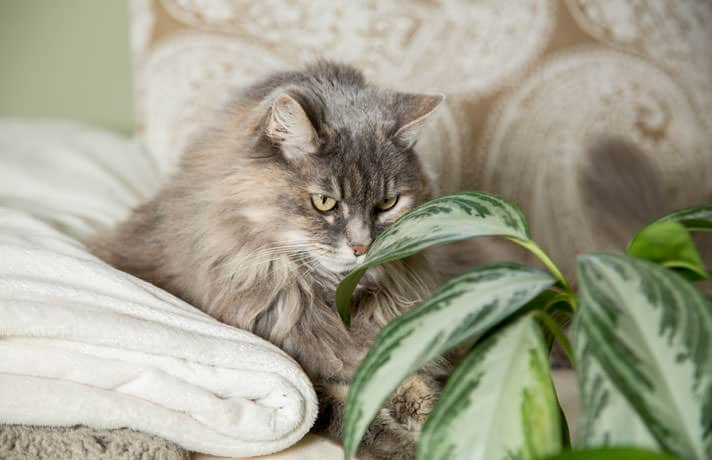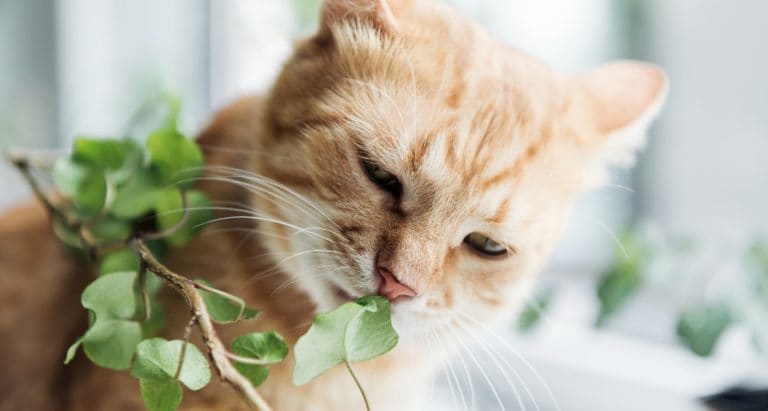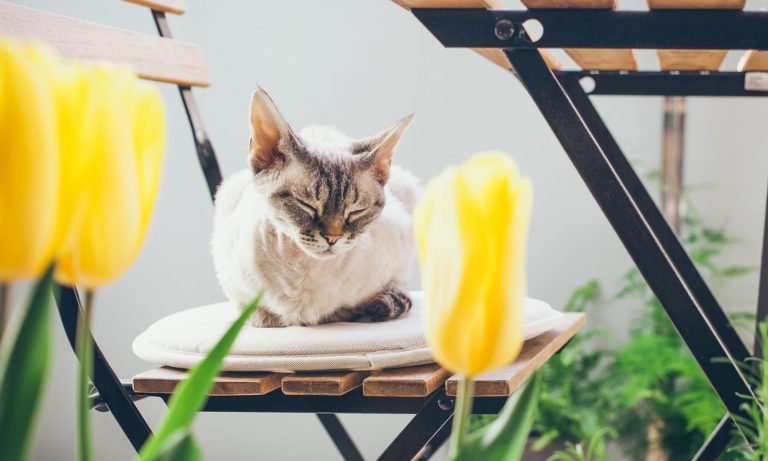Nothing says "spring" quite like a beautiful, thriving houseplant—but if you’re a pet parent, think before you splurge on that gorgeous greenery. Some of spring’s most popular blooms can be toxic to cats and dogs.
So, what’s the best way to bring nature inside this season, for both you and your pet? We asked the plant experts at The Sill for their advice on pet-safe plants for spring, and their selections are every bit as green and gorgeous as those traditional-yet-toxic alternatives.
5 Pet-Safe Spring Plants
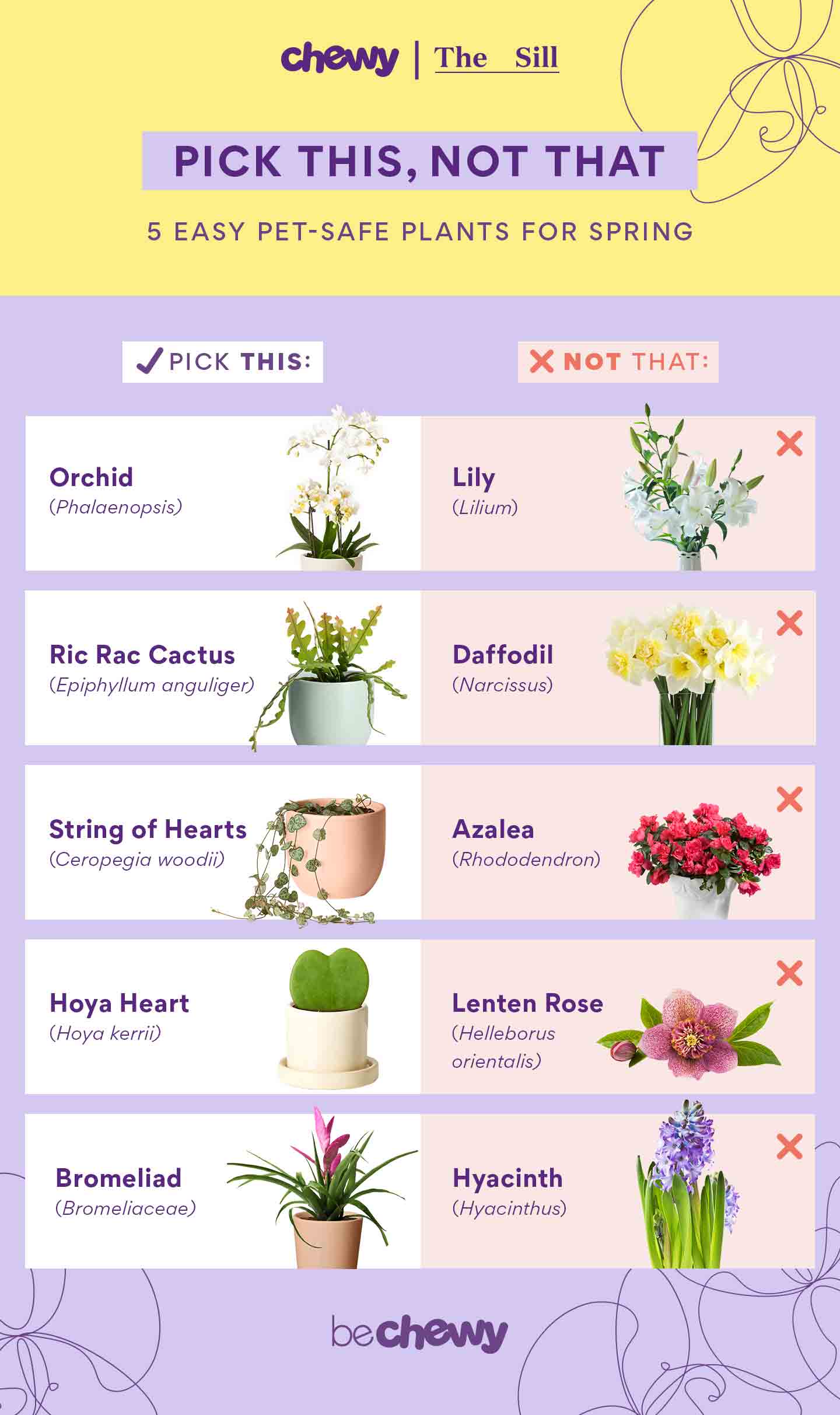
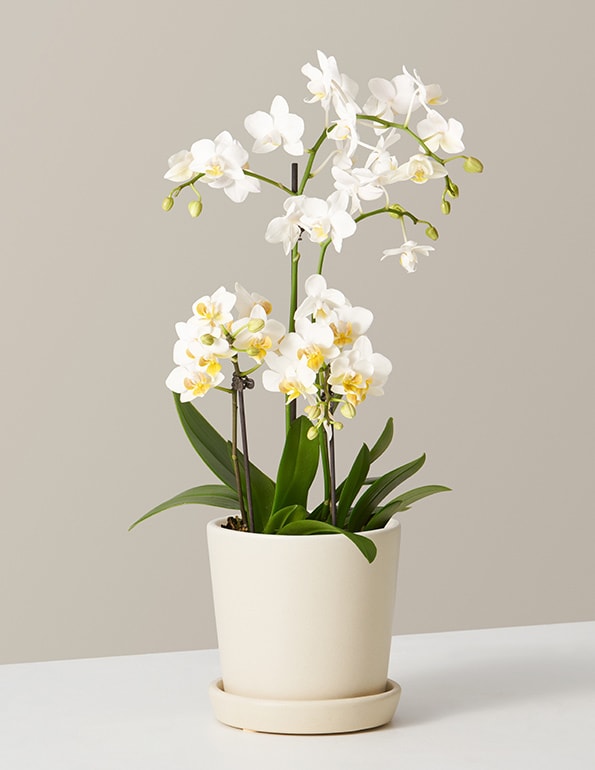
1 Moth Orchid
Instagram-worthy, safe alternative to lilies
Great for beginners
Thrives in bright, indirect sunlight; place in an east or west facing window.
Paris’s Pro Tips:
- Use only orchid bark mix for orchids, not standard potting soil.
- Fertilize moth orchids with a dedicated orchid food found at garden or home improvement centers during the spring and summer growing season to help facilitate blooming.
- Moth orchids can be forced into rebloom the following year (but is rarely worth the effort).
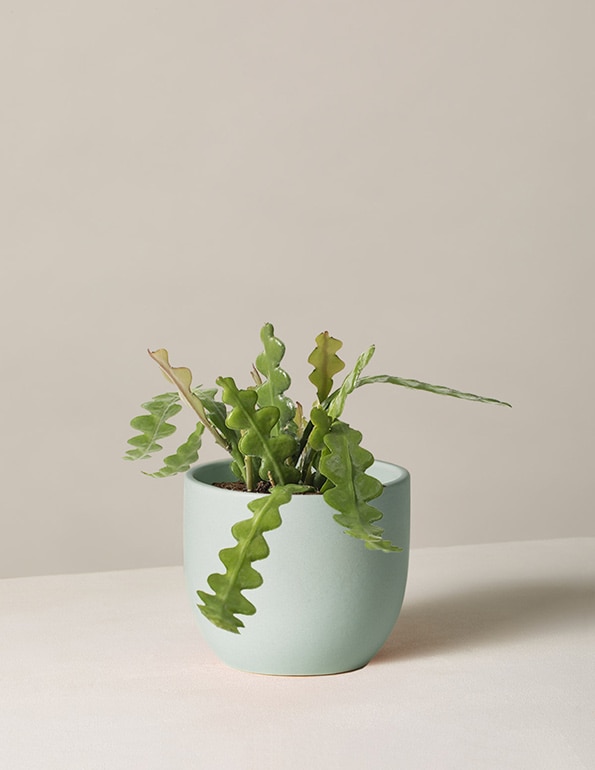
2 Ric Rac Cactus
Safe alternative to daffodils
Trendy for 2022
Needs lots of bright, direct sunlight
Like the daffodil, ric rac cacti have sunny yellow-and-white double-flowering blooms guaranteed to lift the energy in your home. Unlike daffodils, they’re totally safe for cats and dogs alike. (Daffodils, on the other hand, can cause seizures and even heart arrhythmia if ingested.)
Plus, these trendy houseplants have a unique scalloped appearance that’ll make a statement in any setting.
Paris’s Pro Tips:
- Water about every one to two weeks, allowing potting mix to dry out between waterings.
- This plant is a succulent, so err on the side of underwatering. Lift the pot before watering; if it’s heavy do not water. If light, give the plant a deep drink.
- Place in a very sunny spot to help bring on the brilliant blooms
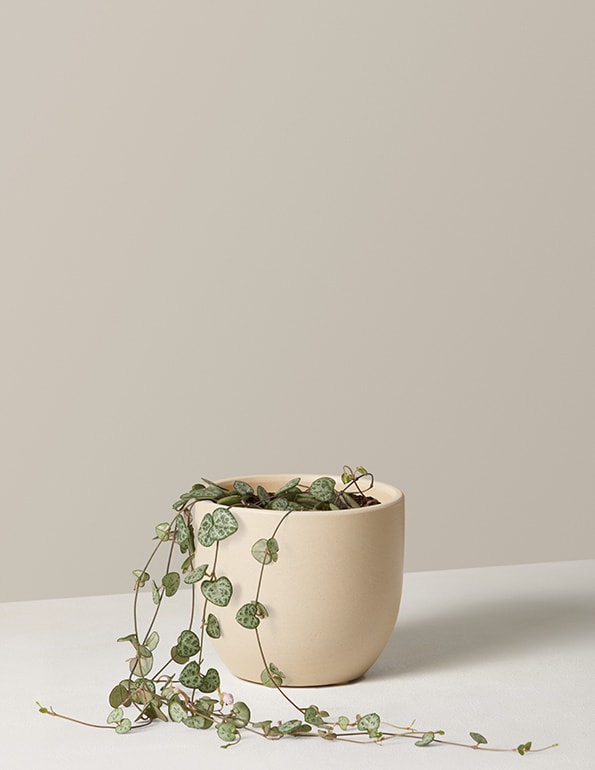
3 String of Hearts
Colorful alternative to azaleas
Trendy for 2022
Needs lots of sun to thrive; place in a south or east facing window
Paris’s Pro Tips:
- Water about every one to two weeks, allowing potting mix to dry out between waterings.
- This plant is succulent-like, so err on the side of underwatering. Lift the pot before watering; if it’s heavy do not water. If light, give the plant a deep drink.
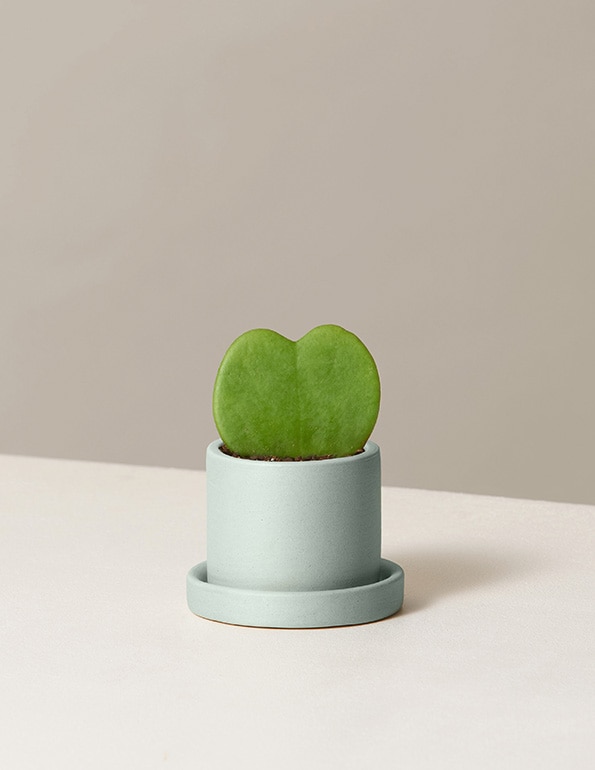
4 Hoya Heart
Romantic alternative to Lenten roses
Bullet-proof for beginners
Thrives in both bright direct and indirect light (provide at least 6 hours or light per day)
Paris’s Pro Tips:
- Water about every one to two weeks, allowing potting mix to dry out between waterings.
- This plant is succulent-like, so err on the side of underwatering. Lift the pot before watering; if it’s heavy do not water. If light, give the plant a deep drink.
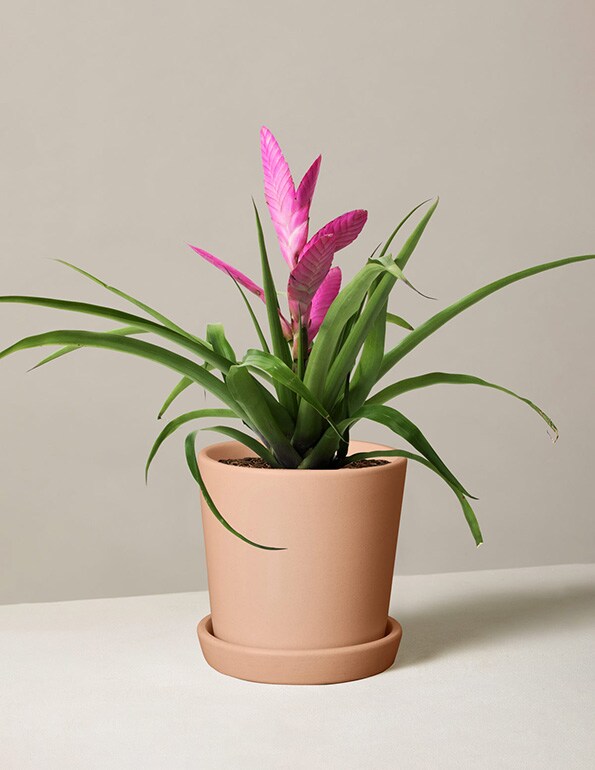
5 Bromeliad
Brilliant alternative to flowering hyacinth bulbs
Trendy for 2022
Thrives in both bright direct and indirect light
Paris’s Pro Tips:
- Water about every one to two weeks, allowing potting mix to dry out between waterings.
- This plant is an epiphyte and benefits from extra humidity. Lift the pot before watering; if it’s heavy do not water. If light, give the plant a deep drink. Many bromeliads have a central cup formed by a rosette of leaves. For these “tank type” varieties, it is best to also water the plant by filling its cup.
- Cut back spent blooms so the plant can focus on new growth that will emerge from the base.
How to Take the Best Care of Your Houseplants in Spring
Whether you’re an established plant parent or a total beginner, follow these tips from Paris to keep your houseplants happy all season long.
- Monitor Your Plants’ Light Levels: Sunlight can be stronger in spring and summer, so if you moved your houseplants closer to the window to maximize light during the winter months, it may be time to move them back—or they might start getting too much direct sunlight. Research your individual plants’ needs to see if a relocation is in order.
- Adjust Watering: That increase in sunlight also means that plants directly in front of or near windows may drink up water at a faster rate than they did during the winter. Be sure to check on your plants weekly for signs of overwatering including yellowing leaves and mushy stems to see if adjustments need to be made in your watering schedule.
- Fertilize: It is best to use a fertilizer designed especially for your type of plant, and fertilize on a bi-weekly to monthly basis, depending on the fertilizer you’re using.
- Consider Repotting: Spring is the best time to repot plants from their current planters (if you miss this window, summer and fall are good too!). Why repot? Some plants may have outgrown their containers since last season. Others may need new potting mix to ensure they have a good soil structure and fresh nutrients. If it has been a year or more since you last repotted or provided fresh soil, early spring—before the summer growing season—is the best time to do it.
Pet-Safe Spring Plants: FAQs
Q:I’m looking for a unique/unusual plant for my home. What pet-friendly options can you suggest?
A:Apart from the options above, consider these plants:
- Fan Palm: Best known for its graceful and elegant appearance, unique fan-shaped leaves, and ability to grow tall (characteristics that aren’t common in most pet-friendly plant varieties)
- Pilea peperomioides: Also known as the “pancake plant” or “UFO plant” thanks to its quirky, coin-shaped leaves. It is relatively easy to care for, non-toxic and a self-propagator! That means it produces sweet little babies or “pups” on its own, which pop up from the soil surrounding the mother plant.
Q:What pet-friendly plants will do well on a balcony or porch?
A:Any pet-friendly plant can work on a balcony or porch as long as the outdoors has the appropriate environmental conditions needed to help it thrive and keep it comfortable. As long as the natural light and temperature/humidity is adequate, you can place virtually any pet-friendly plant outside. Be sure to understand your plant’s needs before moving them outdoors, and if you do decide to move them, do it gradually so your plant has time to acclimate to the stronger outdoor light.
Q:What steps should I take to ensure my pets and plants coexist happily together?
A:Follow this advice to keep your whole household happy and healthy:
- Opt for non-toxic plants only. Having only non-toxic plants is best for any pets who are persistent chewers and won’t leave your plants alone. You can even add plants like cat grass to your collection as a designated plant for cats to chew on.
- Keep plants out of reach. If you have curious pets who always want to nibble at your plants, the best way to coexist is to keep your plants out of reach. You can utilize plant stands, ceiling/wall hangers, and shelving to keep plants at a higher distance.
- Try citrus. Cats typically don't like citrus, so placing orange or lemon peels at the base of the plant, on top of the potting mix, can prevent them from exploring the plant or digging into the soil. You can also dilute lemon juice in water and spray the leaves.
Remember that not all plants are equally toxic to pets; some can be potentially fatal, while others may cause mild sickness or discomfort. Toxic plants’ effect on your cat or dog will also depend on your pet’s unique characteristics like size, health and age. For that reason, it’s best to proceed with caution and avoid bringing toxic plants into your home. And hey, with these elegant, unique and trendy houseplants to bring home instead, you won’t miss their potentially poisonous alternatives!
Love to garden with your pets? Find out more about outdoor pet-safe container gardens.
Expert input provided by Paris Lalicata, Community Associate and Plant Education Director at The Sill.
Love to garden with your pets?
Share:
